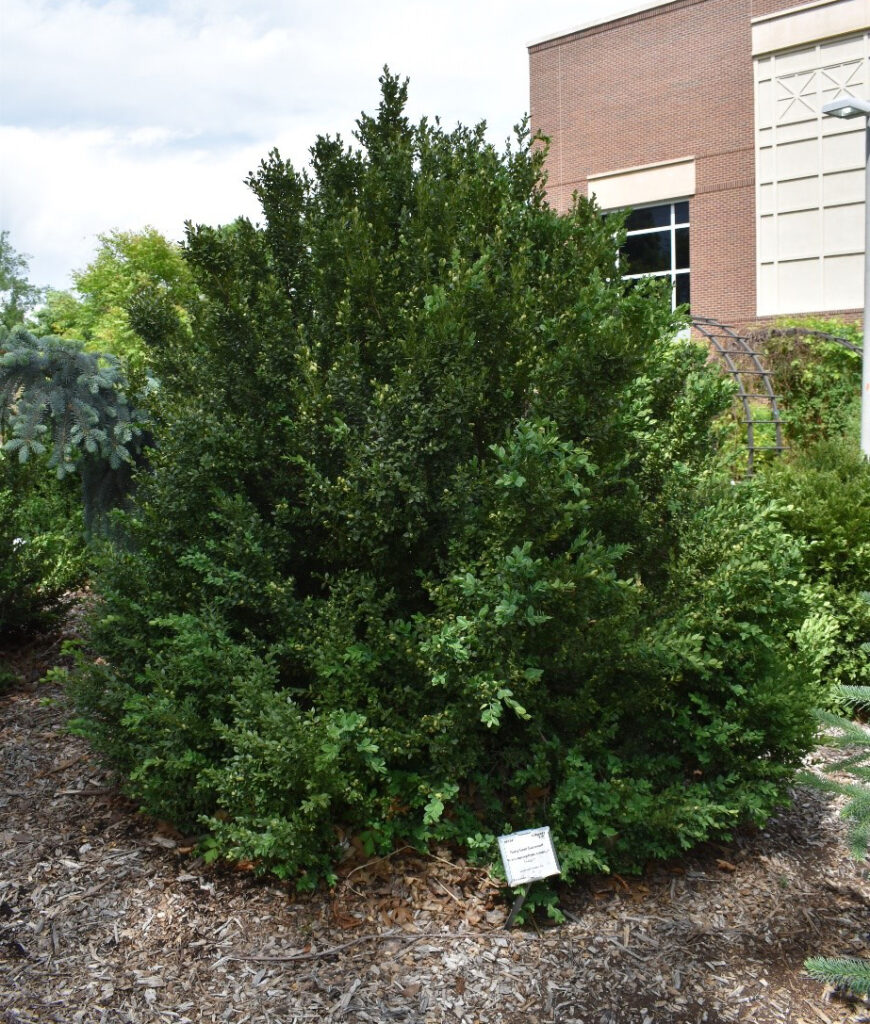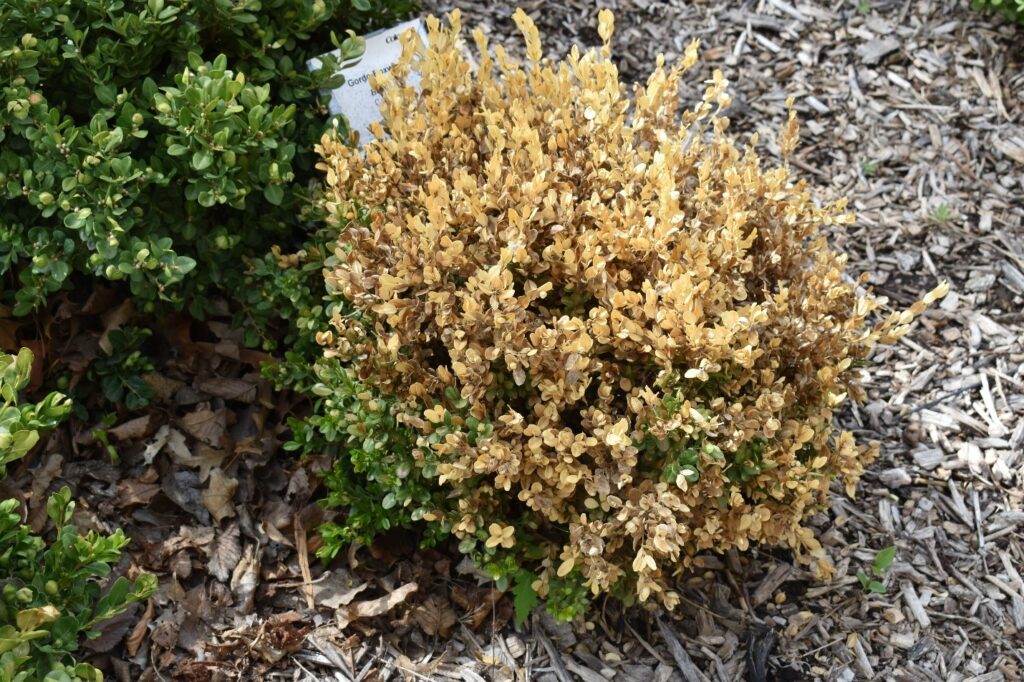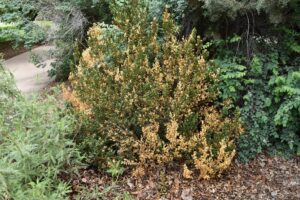For many, boxwoods are synonymous with hedging and parterres of many European landscapes. Generally boxwoods prefer more loam, well-drained soils and often thought to be not the best woody plants for the Rocky Mountain/High Plains region. Root systems are near the surface and should not be disturbed. They prefer full sun to partial shade and display good deer resistance. At Colorado State University (CSU), we have been evaluating certain clones of boxwoods for their cold hardiness. This past winter (2022-23) has been a good test for their hardiness. We had severe cold and major temperature fluctuations. In Fort Collins, on December 22, 2022, the high temperature was 49°F and in a little more than a 24-hour span, on December 23, 2022 the temperature dropped to -17°F. Also in January and February 2023, low temperatures of -11°F and -13°F, respectively, were recorded.
Most of the taxa we have evaluated are clones or hybrids of Buxus microphylla and Buxus sempervirens. As noted above, we had some extreme temperature shifts occur quickly in the winter of 2022-23, often with little snow cover. We did place our usual wind screen of burlap around our collection but still observed some severe winter dieback on several taxa.
In our plots, we have about thirteen different boxwood taxa planted in the perennial demonstration garden located directly north of the University Center for the Arts at 1400 Remington Street on the CSU campus.
In this research reports on 10 taxa that have either performed well over the years or suffered some extreme winter damage.
Good Performers
1. Microphylla types –
- Buxus microphylla asiaticum ‘Gregem’ – Baby Gem Boxwood
Very little browning with just a little tip burn. More compact growth habit with good dark green leaf color. - Buxus sinica var. insularis ‘Wintergreen’ – Wintergreen Boxwood
Wintergreen showed no browning from winter of 2022-23 and has a lighter green foliage color. With a smaller leaf size and a little more open growth habit.


2. Hybrids between –
- Buxus sinica var. insularis and Buxus sempervirens
i. ‘Green Gem’
Green Gem showed no damage with more rounded habit maturing to about 2-3 feet high and wide.
ii. ‘Green Ice’ (“Krazgreen’ PP 10,773)
Showed no winter damage with more green color in winter and new growth more blue-green flush.
iii. ‘Green Velvet’
Showed no winter damage with darker green leaf color. It has a more rounded growth habit.
iv. ‘Green Mountain’
Three plants and all showed very little browning of leaves and no dieback. Matures to about five to six feet tall.
Poorer Performers
3. Buxus sempervirens types – Poorest performers in our trials and will be removed due to severe browning and dieback.
- Buxus sempervirens ‘Arctic Emerald’ PP 18,289
We planted five of these and all five have severe browning of foliage and dead twigs. Plant had more of a columnar-pyramidal growth habit. - Buxus sempervirens ‘Little Missy’
We planted two of these clones and only about 5% of the plant is still green.
We also lost Buxus sempervirens ‘Monrue’ PP 15,243 (Green Tower Boxwood) due to cold temperatures during the winter of 2020-21.


4. Other boxwoods with some damage but not severe enough to remove.

- Buxus sempervirens ‘Conrowe’ PPAF – Gordo Boxwood
We planted five of these boxwoods and all had about 5 to 10% browning of leaves. It has more of a globe-shape growth habit. - Buxus ‘Julia Jane’ (var. japonica type) – Julia Jane Boxwood
We observed about 20-30% browning on our plantings of this taxa. Plant has a more upright to square habit.
It appears from our trials and from the severe 2022-23 winter and major temperature drops, that Buxus microphylla and hybrids between Buxus sinica var. insularis and Buxus sempervirens had better cold hardiness and less browning. Just Buxus sempervirens clones seemed to suffer more from our severe winter of 2022-23 and major rapid temperature drops










